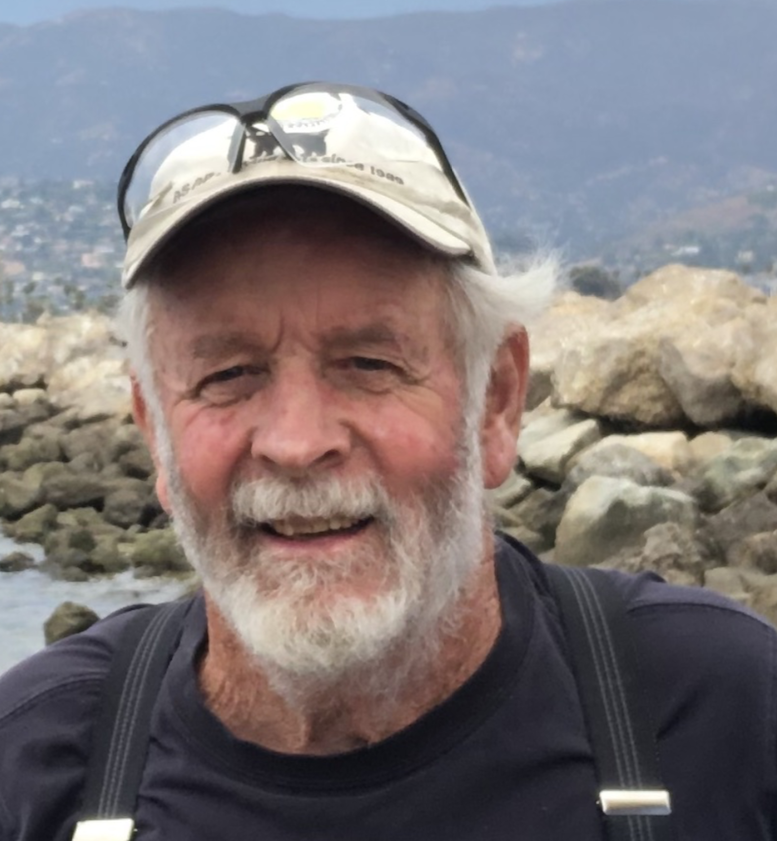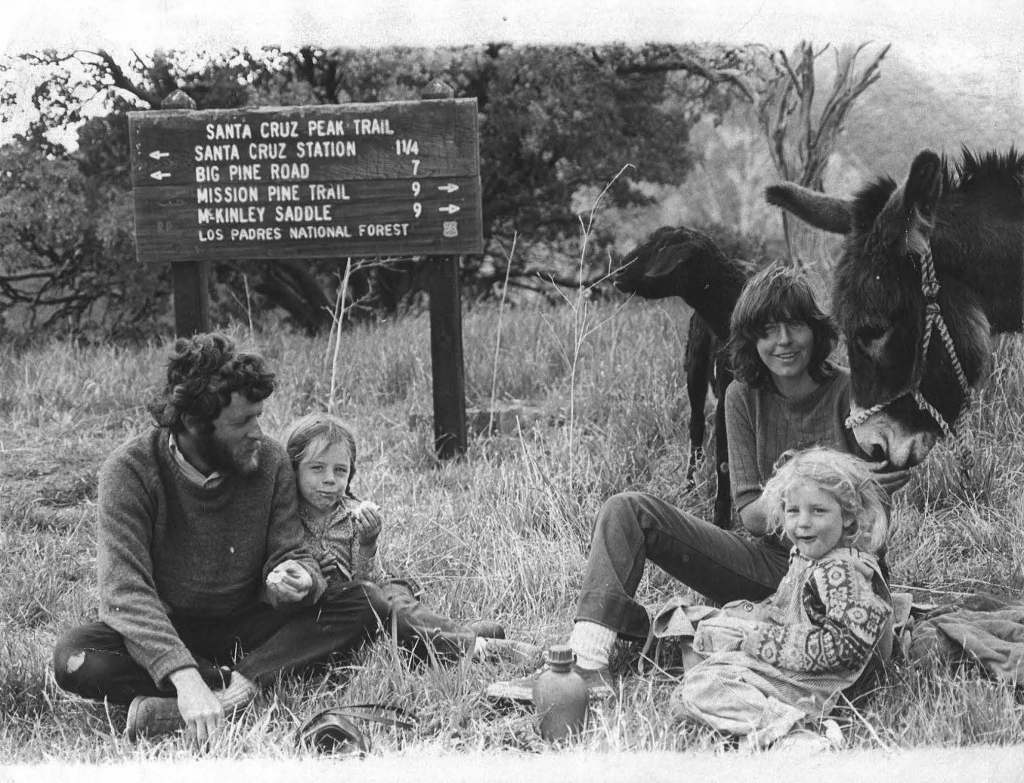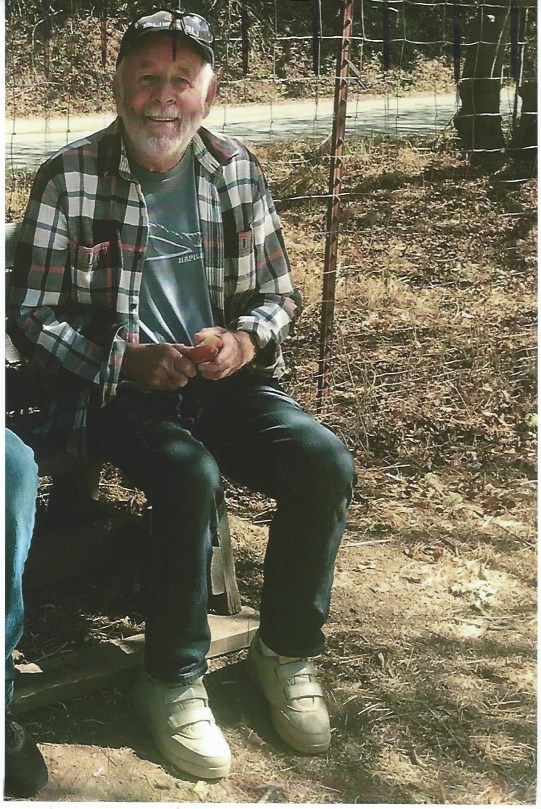
Willie Wood accepted people, the world, and himself as they were. Ted Adams, a longtime friend, describes Willie’s philosophy of life as “a 1960s experiential model — basically, he believed in campfires and the stars at night.”
Willie and his older brother, Vince, were raised by their mother, Elizabeth Hollister Strain, after their father died in 1951 when Willie was 9. Their paternal grandfather, Vincent Wood, came to Santa Barbara in 1908 as a railroad worker. Vincent was an inveterate poker player in a regular weekly game atop the Barbara Hotel. He believed, “If you play poker, play for stakes that make the other players sweat.” His strategy worked. Vincent “won” ownership of one of Santa Barbara’s earliest car agencies by playing poker. In the 400 block of State Street, it was the first Buick dealership west of the Mississippi.
As a teenager in the 1950s, Willie worked at the dealership’s garage, where he discovered his fascination with engines, cars, and motorcycles. One of his jobs was to return cars to their owners’ homes after servicing; he’d affix a three-wheel motorcycle to the back of the car to return to the garage. In the mid-1950s, Willie found community at Santa Barbara High School as a “hot-rodder.” A night owl, he worked in his garage at home on the lower Riviera into the late hours. His most popular car at the time was a classic 1934 four-door Ford Phaeton. Willie found friendships via cars that lasted a lifetime.
Willie’s grandfather Vincent died in 1964. At age 23, Willie found himself in a position where he had many choices about how to live his life. According to friends, he often felt uncomfortable with his inherited wealth and prominent forebears. He felt a strong desire to make his own mark on the world, while also living in harmony with the natural world. As a young man, he moved into a small cabin near Painted Cave; it later burned in the 1964 Coyote Fire.
Two years later, he met and fell in love with a smart and independent UC Santa Barbara student, Barbara Stinson, whom he soon married and shared his life with until his death last year at age 81. Willie and Barbara lived in the Painted Cave community, where they built a hand-hewn one-room house under a boulder’s overhang in which they raised their two daughters, Cricket and Zoë, surrounded by the natural world, lit by stars at night and surrounded by animals, including their favorite, a burro named Eeyore.

For many years, Willie bought old houses and renovated them by hand with a helper and his terrier, Tuni, who enjoyed riding in Willie’s beat-up black Subaru pickup. A childhood friend remembers, “Willie could fix anything, anything at all.” He was particularly proud of his restoring the Valdez House at 1010 Anacapa Street and the Cordero-Oreña-Guidotti House at 1012 Garden Street.
Ted Adams observed that Willie’s patient work restoring houses gave him plenty of time to ruminate about his place in the universe and his responsibilities to it: “Willie had a grasp on life that was admired by others; he loved people and made friends wherever he went, yet he was always searching, never completely settled, and often sought solitude.”
As a descendant of early Santa Barbara families, Willie felt rooted in Santa Barbara. His mother’s grandfather, Edgar Hollister, came to Santa Barbara by steamer in 1871 at age 20, arriving on the beach by rowboat, as Stearns Wharf was not yet built.

Edgar worked with his father, Albert Hollister, on their Fairview Ranch in Goleta. Albert had purchased the ranch in 1870 at the suggestion of his younger brothers, WW Hollister and Joseph Hubbard Hollister, both of whom had driven sheep across the plains to California in the 1850s. Within a few years, Edgar also operated Rancho Las Cruces, where he raised sheep, shipping wool from the Gaviota pier.
Edgar’s daughter, Ethel Mae Hollister, was Willie’s grandmother; he enjoyed imagining her riding horseback in the early 1900s from the Fairview Ranch to Santa Barbara High School, which at the time was downtown at the corner of De la Vina and Victoria Streets.
Willie’s skills as a craftsman and interest in historic buildings led to one of his most enduring legacies — at the apex of the front pediment of Mission Santa Barbara, where his brother, Vince, is a parishioner. When the friars needed a new cross made to stand high between the Mission’s twin towers, Willie volunteered. He lovingly crafted the cross of hardwood, which now watches over the community where Willie spent his life surrounded by family and friends, and the distant sandy beach where his grandmother’s grandparents first arrived in Santa Barbara in a rowboat in the early 1870s.

You must be logged in to post a comment.